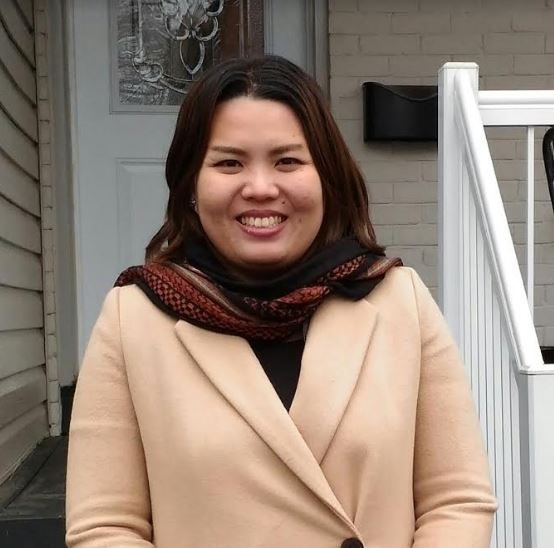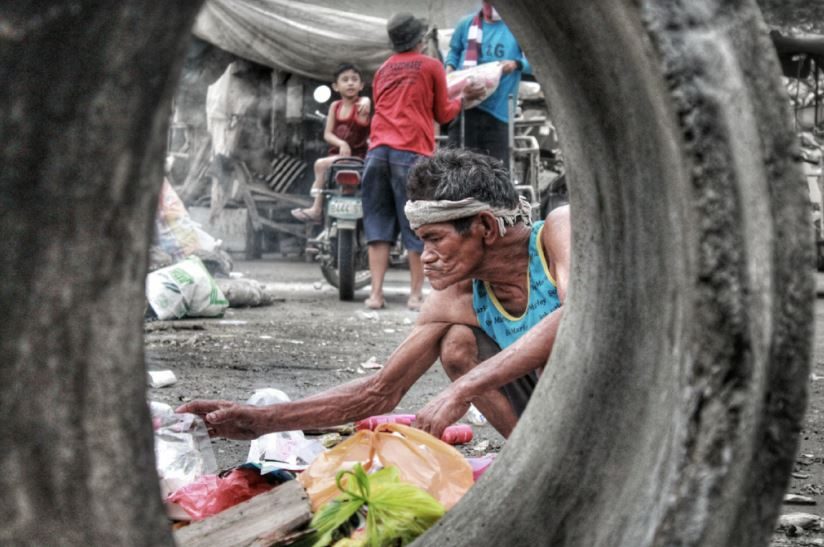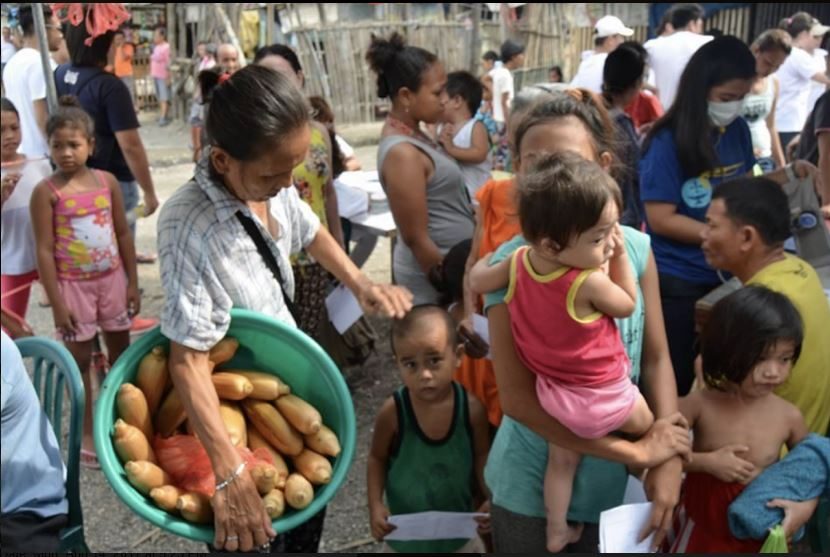SUMMARY
This is AI generated summarization, which may have errors. For context, always refer to the full article.

It was 12 in the afternoon. Aling Mary, 62, was pacing the shores of Aplaya in Baseco Compound, Manila.
She has not eaten for days and was already exhausted with unsuccessful scavenging for food in garbage piles. Like other older adults in the area, Aling Mary was not your textbook definition of a lola (grandmother) on her rocking chair telling stories to her grandchildren.
In fact, just like the 240 older adults that I have interviewed, Aling Mary was actively engaged in economic activities such as collecting tirtir (recycled food from garbage), retaso (discarded parts of vegetables), and tahong (mussels from tje Pasig river) to ensure that she and her son, who has a developmental disorder, would have food for the day. (READ: Without pension, senior citizens forced to continue working)

That day, however, was different for Aling Mary. That day, her aging body gave up. She was buried in an unmarked grave. The Department of Social Welfare and Development took custody of her son.
Her shanty was torn apart by neighbors who took claim of her 10-square meter land, her home for 20 years.
The United Nations Population Fund estimated that the number of Filipinos aged 60 years old and above will reach a total of 23.63 million by 2050.
Demographers called the rise in the population of older adults as “population aging” and has been observed in the Global North (Northern American Region, East Asia, Australia, and Western Europe) for the past decades.
Some of the key issues that aging societies face are unbalanced ratio of working and dependent citizens, lack of infrastructural support, and intergenerational gap. These were addressed in the Global North through inclusive policies and programs like post-retirement employment, comprehensive pension and health care, and assisted living arrangements.
Similar to other Global South countries, the Philippines’ older adult population is faced with issues that transcend desires for self-actualization as it combats the threats of food insecurity, house tenure, and health care inaccessibility. Their vulnerability to these threats are predicated and exacerbated by their concept of malasakit or compassion for their households. (WATCH: Nanay Ely, the 82-year-old crocheter of Tayuman)
Too often in my conversations with them would they tell me that they have foregone their medical needs to buy a meal for their grandchildren. Too often have they gone hungry to give their grandchildren a bigger meal portion.
Aling Rosie, 58, recounted how she has constantly missed or lessened her food consumption so her grandchildren could have more. “Mas importante na sila ang makakain kaysa ako (It’s more important that they eat well instead of me).”
Apart from food scavenging, older adults in the area also participate in other diskarte (economic activities) like pagbabawang (peeling garlic), selling cooked food, and other home-based services like laundry, cleaning, and babysitting. A typical daily income for peeling a 25 kilograms of garlic is P50.

Since most of the older adults I have spoken with have not completed formal education, their ability to access formal employment was low.
Of the 240 interviewees, there were only 25 who have pension from SSS which they use to contribute to the needs of their household. In some cases, this contribution is nearly non-voluntary as older adults secure their place in the household with this expected monthly financial source.
An older adult who has no other relative has narrated to me how she has informally arranged accommodation with her peer by giving them access to her SSS pension debit card. “Wala naman mag-aalaga sa akin kasi ‘di naman ako nakapag-asawa. Mas mainam na may kumukupkop sa akin.”
(Since I did not get married, no one will look after me. It’s better that I have this arrangement so that I am assured that I have people who would take care of me.)
With the Sustainable Development Goals promoting the slogan, “Leave no one behind,” a call for a more inclusive policy for social development remains in our country. The provisions accorded by 3 laws – Republic Acts 7432 (Senior Citizen’s Act), 9994 (Expanded Senior Citizen’s Act of 2010), and 10645 (PhilHealth Insurance of Senior Citizens) – allowed this sector to receive benefits that range from discounts in purchase of basic products to PhilHealth coverage.
However, access to most of these benefits remain class-based given the required documents that the poor older adult would not usually have such as birth certificate, employment records, and tax receipts. Of the 240 interviewees, only 56 had a senior citizen card and only 27 were qualified to receive the P1,500 quarterly stipend from the government.
Aling Mary did not have a senior citizen card nor was she qualified to receive the indigent stipend. As she always told me when I ask her to secure her benefits, “Unahin ko muna pangkain namin. Kailangan madiskarte ka. ‘Yung kulang, bahala na si Lord.”
(I’ll prioritize securing our food over applying for those documents. One needs to know a lot of strategies. When these strategies fail, God will provide). – Rappler.com
Maria Carinnes P. Alejandria-Gonzalez is the Lead Research Associate for the Social Health Studies of the Center for Social Sciences and Education of the University of Santo Tomas. She is currently an Assistant Professor in the Department of Sociology of UST where she teaches Social Demography, Rehabilitative Sociology, and Environmental Sociology.
Add a comment
How does this make you feel?
There are no comments yet. Add your comment to start the conversation.